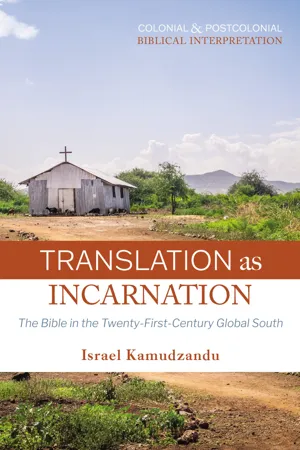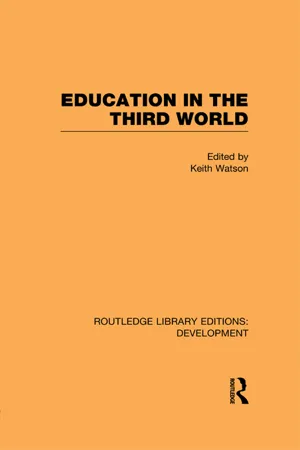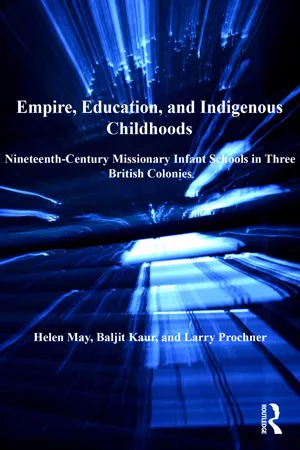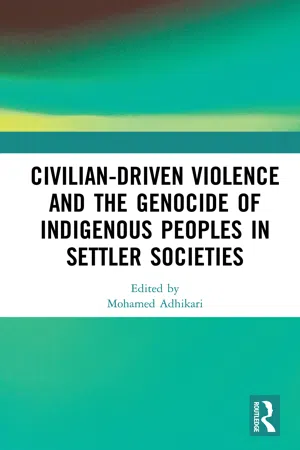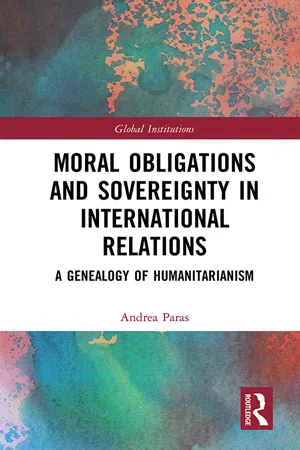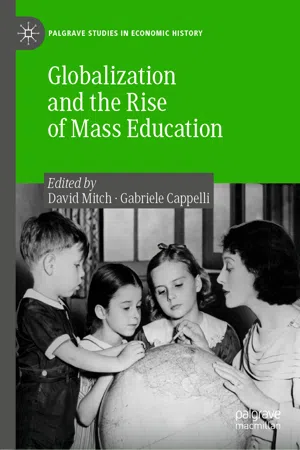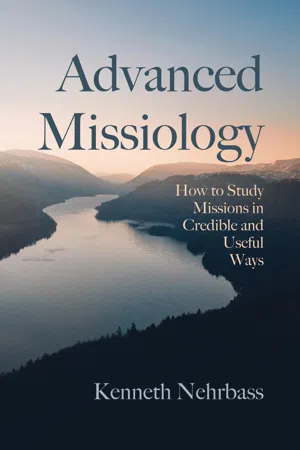History
Missionary Schools
Missionary schools were educational institutions established and run by religious missionaries, often with the goal of spreading their faith and providing education to local communities. These schools played a significant role in the spread of Western education and Christianity in many parts of the world, particularly during the colonial era. They often combined religious instruction with academic learning.
Written by Perlego with AI-assistance
Related key terms
Related key terms
1 of 4
Related key terms
1 of 3
8 Key excerpts on "Missionary Schools"
- eBook - ePub
Translation as Incarnation
The Bible in the Twenty-First-Century Global South
- Israel Kamudzandu(Author)
- 2023(Publication Date)
- Resource Publications(Publisher)
Politically, colonialists were strategic in their approach to Global South nations because they were perhaps the first ones to enter into a relationship with kings, queens, chiefs, and village leaders. Missionaries on the other hand were swift in introducing denominational teachings through catechism, hymns, and Bible readings. In these various mission- and church-related schools, missionaries were free to educate indigenous people in accordance with their evangelistic and missionary perspectives. In all mission schools, morning and mid-week prayers as well as weekend worship services formed the culture of boarding institutions. Missionaries who once sided with colonialists, realized that the success of their evangelistic and missionary projects depended on educated indigenous people. They needed literate indigenous teachers to help them spread their evangelistic message. Hence, they made it their pursuit to educate people who would preach and teach using indigenous languages and tribal dialects. Instead of their earlier focus on teaching Western cultural values, missionaries began to focus on Biblical teachings, Christian preaching, and community formation.On the other hand, colonialists employed a system of divide and conquer, and through educational policies they strategically restructured communities into classes (the more educated people got better jobs, lived in nicer colonial neighborhoods, and were considered more “Christian,” leading them to look down on their less educated, less “Christian” kinsmen), and cities were designed not to accommodate all people but certain groups of people, with the colonizers and their Western people living in luscious suburbs, and indigenous people residing in poorer locations. The school system was also divided into indigenous schools and white or Western schools, and shopping areas were demarcated between Western and indigenous. These lines or codes of separation were not to be violated, and any crossing of boundaries by indigenous persons was punished either by death or imprisonment. These divergences in educational policies for indigenous people were a cause for division and conflict between Gospel missionaries and colonialists. The divergence was inevitable because not only did Western missionaries struggle with it, but indigenous leaders and their peoples also resisted, protested, and revolted against forms of oppressive education. - eBook - ePub
- Keith Watson(Author)
- 2012(Publication Date)
- Routledge(Publisher)
After independence in 1957 mission schools were given the option of going fully private or of becoming assisted government schools. The unanimous decision was for the latter, regardless of cost, in the belief that standards and racial harmony were less likely to be adversely affected. By an act of parliament of 1961 mission schools were classified as fully assisted schools under the control of the Ministry of Education and as such became part of the federal education system. Although they were guaranteed ‘maximum consultation’ regarding the appointment of principals, they lost their independence over the appointment of staff and the admission of students or of restricting numbers. They have thus been forced to take on more puils than they might have wished with the resultant large classes: they have had no say over the official syllabus nor over the excessive concentration on examinations. Because many of the European staff took out Malayan citizenship and because missionaries did not take full government salaries they have earned the respect of the authorities. They are allowed to teach Christianity outside the offical school hours provided similar provision is made available for the teaching of Islam by qualified staff. Mission schools still continue to pioneer the way in curriculum development in subjects such as mathematics, home economics and commercial subjects, in ‘setting’ for specific subjects; and in forging close links between schools and parents in the community. (Casey). Thus while they have lost their distinctive ‘missionary’ touch they nevertheless have a key role to play.THE MISSIONARY CONTRIBUTION What then can be said of the contribution of mission schools to educational development in selected South East Asian countries?In the early years especially in their work in Thailand missionaries were often arrogant and intolerant. They were more concerned with conversion than with getting alongside the Thai people and understanding them socially and psychologically and they owed their right to stay in the country as much to the farsightedness of the Chakri kings as to their own abilities and sense of purpose. The early education offered was too intensive and far less related to daily life than that offered in the monastic schools. As a result it led to failures. (Thompson 1941). That the picture gradually changed was mutually beneficial and mission schools stimulated successive Thai governments to provide state education, education for girls, technical and agricultural education. They also set standards for state schools to emulate. As a result they helped in the process of modernisation and by encouraging indigenous involvement in state education they helped prevent this modernisation from becoming Westernisation. Unfortunately other forces, most notably US economic investment and the presence of large numbers of US ‘advisers’ during the Vietnam war undermined this gradual process of modernisation and led to some distorted aping of the West(6).Perhaps the most lasting influence has been a subtle one since some Christian ideals have infiltrated aspects of Thai society. There has been a greater concern for individual rights and freedoms, a concern for social welfare and medical help, an element of competition and individualism, a belief that promotion should come from merit and educational achievement and not simply from patronage as happened in the past and ‘if Mrs. Leonowens or any other nineteenth century critic of Siamese society were to return today they would find it hard to recognise that present attitudes towards social welfare, economic development and medical care came from the same race of people whose indifference they so roundly condemned’. (Watson 1980a). - eBook - ePub
Empire, Education, and Indigenous Childhoods
Nineteenth-Century Missionary Infant Schools in Three British Colonies
- Helen May, Baljit Kaur(Authors)
- 2016(Publication Date)
- Routledge(Publisher)
The changing face of the missionary work force – from predominantly male to increasingly female, and the shifting focus in engaging with Indigenous peoples – from direct evangelization to indirect conversion through educational and social reform, both played a crucial role in the increased emphasis on shaping the Indigenous childhood into ‘Christian habits’ through education. Infant schools were one step in this mission. Missionaries preached that redemption could only be achieved though Christian living, which was to be modelled by missionaries and their families, with its rudiments taught in school and its doctrines preached in church. However, as Hall argues, the ideology of ‘Englishness’ ‘could ultimately only be white’. 93 Although coloured Indigenous peoples were encouraged to aspire to English Christian civilization, they could never fully attain it. 94 This provided a conduit for colonization. 92 Jayawardena, The White Woman’s Other Burden. The struggle for wider and more significant public roles by women was not confined to the missions or to the nineteenth century. 93 Hall, White, Male and Middle Class ; Catherine Hall and Sonya O. Rose, At Home with the Empire: Metropolitan Culture and Imperial World (Cambridge: Cambridge University Press, 2006). 94 Also see Watt, ‘Introduction’, 22. Mission theories and principles outlined above were more influential in the missionary administrative circles than in the shaping of the missionary practice in the field across colonial contexts - eBook - ePub
Catholic Missionaries and Their Work with the Poor
Mitigating Market-Government Failure in Emerging Nations
- Albino Barrera(Author)
- 2018(Publication Date)
- Routledge(Publisher)
In sum, missionaries’ primary and secondary schools for the poor and the ultra-poor children serve development efforts both directly and indirectly. To begin with, they contribute towards addressing what has long been known as a significant cause of poverty traps – the lack of schooling. Missionaries’ schools directly address both dimensions of government failure – the absence of schools where they are needed the most and the poor quality of public education. This is clearly a boon for both the local impoverished community and for the government. Not surprisingly, in some cases, governments are more than happy to pay the salaries of at least some of the teachers in missionary-run schools. These are called grant-aided schools.How missionary educational initiatives strengthen and build civil society
Building local capacity
The Sisophon Jesuit school is only one of many initiatives that illustrate how missionary educators pass on vital know-how to the local communities they serve and the host country. These missionary-initiated schools provide local officials and administrators with actual examples of how to set up and manage quality schools. In addition, these schools hire local teachers and administrators, thereby giving them a unique chance to hone their skills under expert guidance in a process of learning by doing. Moreover, workshops and training programs initiated by the missionaries seek to improve constantly the pedagogical skills of local teachers.92All these are vital in building the human capital of a country’s educational infrastructure. Just as in their long-standing, well-established schools in the cities or the larger towns, these religious institutes are able to tap into their expertise and their personnel to bring best practices and the latest innovations to their schools in rural areas or slums targeted at the poor. For example, the Daughters of Charity were raising funds for a three-year project of workshops and training materials to improve the skills of 285 teachers from Vincentian and Daughters of Charity schools throughout the Dominican Republic. By the sisters’ own count, this skills enhancement project will immediately benefit over 6000 students from 4000 families.93 - Mohamed Adhikari, Mohamed Adhikari(Authors)
- 2021(Publication Date)
- Routledge(Publisher)
Because the Canadian system relied upon missionary societies to administer Indigenous boarding schools, the efforts of missionaries in Canada will partly also be discussed in the sections on principals and teachers below. Missionaries, however, also played a part at other levels in the system. In the first half of the twentieth century, this role entailed preserving the boarding school system and resisting government proposals to secularise it or place it under more immediate government oversight. For example, in 1905, Samuel H. Blake from the Mission Society of the Church in Canada, a body of the Anglican Church, wrote to the Deputy Superintendent of Indian Affairs that, based on conferences between Anglican, Presbyterian and Methodist dominations, it was clear that the objectives of Indian education were not being fully achieved. To remedy the situation, he recommended that Indian day schools be dispensed with, and that more resources be directed toward boarding and industrial schools. He also recommended that Indian youths be provided with a portion of land, as well as support to start farming after their education was completed, so that they would not simply return to the reserve or ‘hunting lodge’. 47 This was a common refrain among missionaries, calling for more control over Indigenous children to be handed to the churches, and for Indigenous children to have less contact with their families and communities. This is not to suggest that there was uniformity among members of the various denominations on the running of schools. Indeed, one also sees moments of criticism emerging. 48 47 Library and Archives Canada (hereafter LAC), RG 10, vol. 6001, file 1-1-1, part 1, Letter from S.H- eBook - ePub
Moral Obligations and Sovereignty in International Relations
A Genealogy of Humanitarianism
- Andrea Paras(Author)
- 2018(Publication Date)
- Routledge(Publisher)
colonial endeavors. Robert Woodberry, for example, asserts that “it is time for a reevaluation of the glib assertions popular in intellectual circles today about the close connection between missionaries and colonialism, and the overwhelmingly deleterious impact of missions on non-western societies.” 8 Likewise, other scholars have analyzed the positive roles that missionaries played in promoting democratization, 9 health care, 10 or education, 11 despite operating within a colonial context. Erica Bornstein, among others, has identified historical missionary agencies as the precursors to contemporary development organizations: in addition to preaching the gospel, missionaries worked hand-in-hand with colonial administrators to provide infrastructure, education, and agricultural reform. 12 While their assessments of missionaries’ contributions are more positive than those of Doyle and Rist, these scholars also take it for granted that missionaries were inevitably and inherently at the heart of the colonial project. It is understandable why IR scholars tend to associate missionaries with colonialism and the civilizing mission: by the second half of the nineteenth century, it is true that missionaries had firmly established their role in promoting Britain’s colonial obligation to export civilization throughout the empire. In his 1856 lecture tour, the missionary-explorer David Livingstone spoke famously about the need to export “Christianity, commerce, and civilization,” and this triad has become a common shorthand for nineteenth-century British colonialism. 13 By the time of the Berlin Conference in 1884, missionaries were widely regarded as key actors in the so-called civilizing process - eBook - ePub
- David Mitch, Gabriele Cappelli, David Mitch, Gabriele Cappelli(Authors)
- 2019(Publication Date)
- Palgrave Macmillan(Publisher)
Across countries, Woodberry (2004, 2012), and Lankina and Getachew (2012) find a positive effect of Protestant missions on democracy. Subnationally, Nunn (2010) documents that missions resulted in higher religiosity, Gallego and Woodberry (2010) and Nunn (2014) show a positive effect on educational attainment, and Cagé and Rueda (2016) on newspaper readership. Wantchekon, Klašnja and Novita (2015) find positive human capital effects from religious schools in Benin. Outside Africa, Calvi et al. (2018) and Castelló-Climent et al. (2017) report a positive effect of missions on Indian literacy and tertiary education, and Chen et al. (2013) and Bai and Kung (2015) on Chinese economic development. In Latin America, Waldinger (2017) and Valencia Caicedo (2019) have mainly documented the important effects of missionaries on education, which will be the focus of this chapter. This continent is important to shed light on this issue, given its rich history of colonization and missionary presence. Still, I provide important parallels to missions in other regions. Because of their global coverage and strong emphasis on education, missions can be understood as constituting a first global mass education wave. Missions are also interesting historical entities, as instruction in these entities was essentially mandatory. In Spanish, missions were known as reducciones, meaning where indigenous people were reduced, or gathered. If indigenous people fell in a certain geographic area, they were essentially forced to attend a mission, constituting the first mandatory schools. The literature on missions is then related to the well-established literature on compulsory schooling. 3 As a case in point, Acemoglu et al. (2014) use Protestant missions as instruments for education to estimate economic returns to this productive factor - eBook - ePub
Advanced Missiology
How to Study Missions in Credible and Useful Ways
- Kenneth Nehrbass(Author)
- 2021(Publication Date)
- Cascade Books(Publisher)
258 By now, most academicians have all but given up hope for objectivity; and no longer expect human nature to operate throughout history according to “laws” the way physics does. However, we can still use history to theorize about human nature and how people typically respond to missionaries and to the Christian faith.Rather than studying the history of missions diachronically, this approach utilizes what Bradley and Muller referred to as the “special or synchronic method.”259 We look at a specific issue and see how this has been understood throughout history. This tactic of extracting truths from the study of the history of missions goes back as far as the third-century historian Tertullian who theorized that martyrdom causes the church to spread further.Current academicians still use history in this way. For instance, Bonk’s history of missionaries in Africa and China argues that Christianity spread as missionaries identified with local cultures.260 Kim’s history of Christianity among Koreans living in Myungdongchon village, China, attempts to build on the theory of “people movements” by examining indigenous leadership patterns and the holistic approach of missionary efforts in that region.261To consider some other universal principles: Missiologists have tried to look at historical data to determine if Christianity is spread top-down, through influential elites, or if it is primarily a movement at the grassroots. For example, Neill262 shows how Francis Xavier enjoyed success by reaching the elite of Japan—the “best people yet discovered”; and how Christianity spread rapidly through the Pacific by reaching the kings of Tonga and Tahiti. Irvin and Sunquist’s history of the world Christian movement demonstrates that Christianity expanded where colonial powers went: Calvinism spread with the Dutch, who proscribed Catholicism; Catholicism spread with Spanish, French, Italians, and Portuguese, who tried to convince Thomist, Ethiopian, Orthodox, and Coptic Christians to conform to Rome; Lutheranism accompanied Germans in their colonial expansion, and Methodism and the Anglican Church spread in British colonies.263
Index pages curate the most relevant extracts from our library of academic textbooks. They’ve been created using an in-house natural language model (NLM), each adding context and meaning to key research topics.
Explore more topic indexes
Explore more topic indexes
1 of 6
Explore more topic indexes
1 of 4
